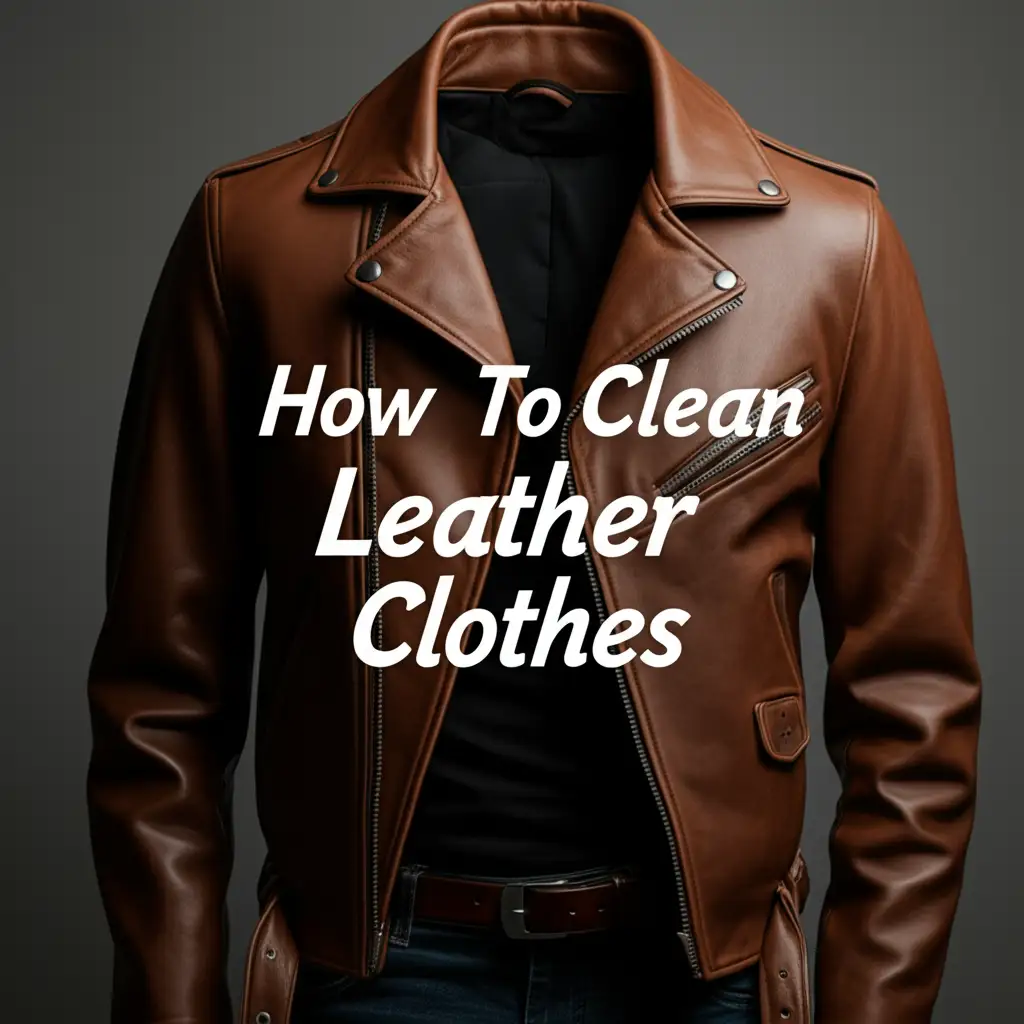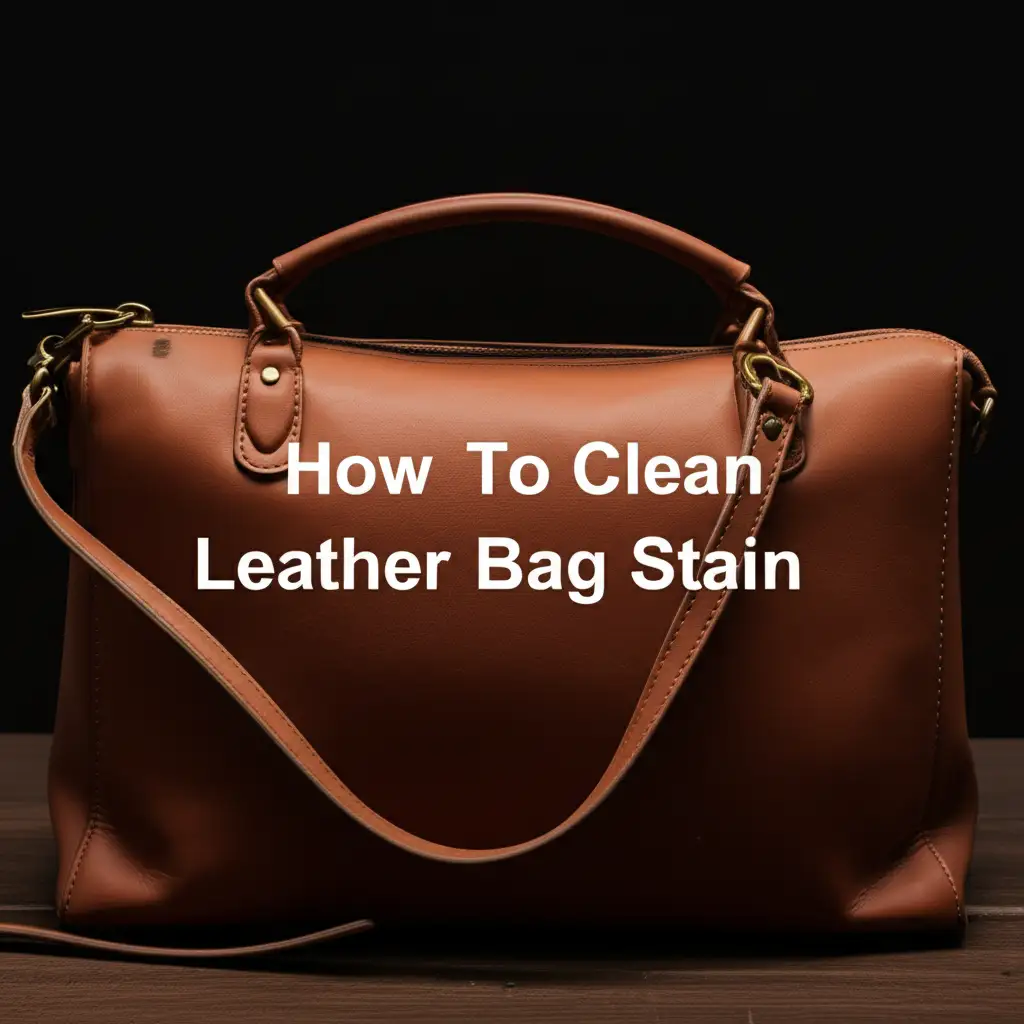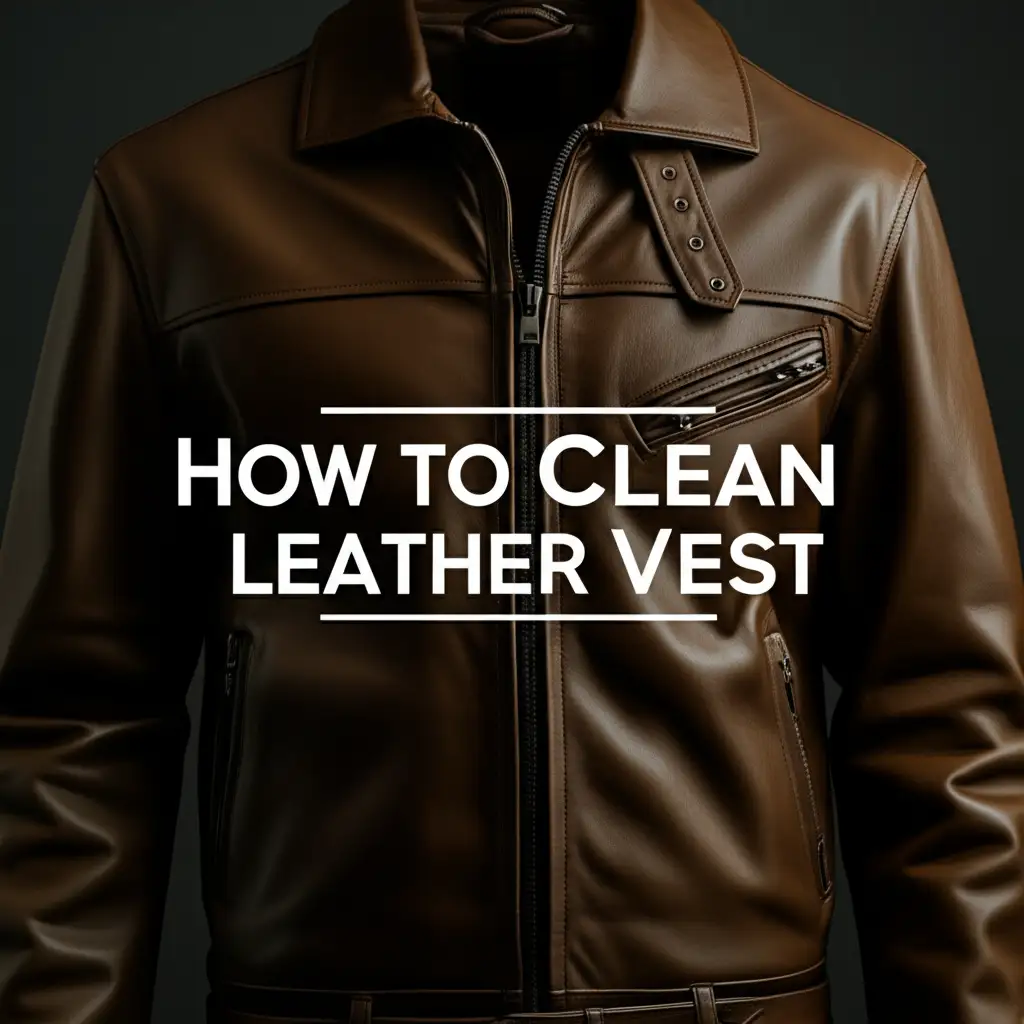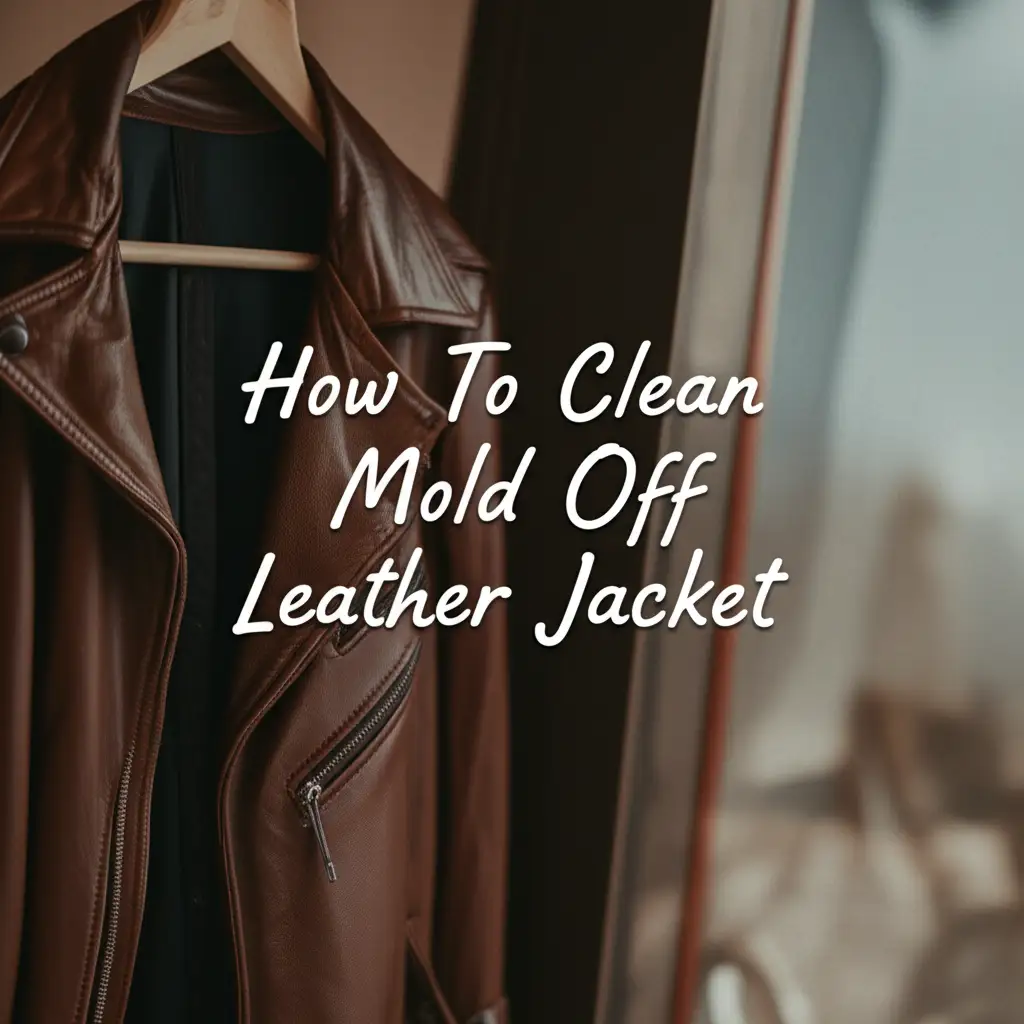· Leather Care, Clothing Maintenance · 17 min read
How To Clean Leather Clothes

Restore Your Leather: How To Clean Leather Clothes Effectively
Leather clothes bring a classic style and durable quality to any wardrobe. I love the way a good leather jacket feels and looks. But over time, dirt, oils, and stains can take away its shine. Proper care is key to keeping these cherished items looking their best. Many people wonder how to clean leather clothes without causing damage. You might think cleaning leather is difficult. I understand that concern.
This article will guide you through simple, safe steps to clean your leather garments. We will cover everything from basic dusting to deep cleaning and conditioning. You will learn how to handle common stains. I will also share tips for protecting your leather items. Get ready to give your leather clothes the care they deserve, helping them last for years to come.
Takeaway
- Always test cleaning products on a hidden spot first.
- Clean surface dirt regularly with a soft cloth.
- Address stains quickly with specific cleaning methods.
- Condition leather after cleaning to keep it soft.
- Store leather clothes properly to prevent damage.
To clean leather clothes, gently wipe them with a damp, soft cloth to remove dust. For deeper cleaning or stains, use a specialized leather cleaner or a mild soap solution. Apply the cleaner sparingly, wipe with a clean cloth, and then condition the leather to restore moisture and shine.
Understanding Your Leather Garment
Before you start cleaning, it is important to know your leather. Different types of leather need different care. Knowing what kind of leather your garment is made from helps you choose the right cleaning method. This step protects your valuable items from harm.
Real leather comes from animal hides. It has a unique grain and feel. Faux leather is man-made. It often uses plastic or synthetic materials. My own experience tells me that treating them the same can lead to mistakes. Always check the care tag on your leather clothes. This tag gives specific instructions for cleaning. Some leather items may be dry-clean only. Others can be cleaned at home.
Types of Leather to Consider
Leather garments come in various finishes. Full-grain leather is the highest quality. It shows natural markings and ages beautifully. Top-grain leather is sanded to remove imperfections. It feels softer. Suede and nubuck are napped leathers. They have a fuzzy surface. These types are very sensitive to water. They require special cleaners. Patent leather has a glossy, coated finish. It is easier to wipe clean. Each type responds differently to cleaning agents. For example, a solution safe for a smooth leather jacket might damage a suede vest. I always make sure I know the leather type before I start any cleaning process.
The Patch Test for Safety
Before applying any cleaning product to a large area, always perform a patch test. This step is very important. Find a hidden spot on your leather garment. The inside of a seam or under the arm is a good choice. Apply a small amount of your chosen cleaner to this spot. Wait for a few minutes. Then, check for any color changes, discoloration, or damage. If the leather looks fine, you can proceed with cleaning the rest of the garment. If not, try a different cleaning product. This simple test saves you from bigger problems. I always do this first. It helps me feel confident about the next steps.
Basic Steps for Cleaning Leather Clothes
Regular cleaning helps your leather clothes stay fresh and prevents dirt buildup. Dirt and grime can settle into the leather’s pores. This makes the leather look dull over time. I find that a little routine care goes a long way. This basic cleaning is not a deep clean. It is more about maintenance. Think of it as a quick refresh.
These steps are simple and quick to do. They help keep your leather looking good between more thorough cleanings. They also prepare the leather for stain removal or conditioning. I always start here. It ensures I have a clean surface to work with.
Daily Dusting and Wiping
Dust and loose dirt can scratch leather surfaces. My routine starts with a soft, dry cloth. I use it to gently wipe down the entire garment. This removes any surface dust. For slightly more dirt, I dampen a cloth with clean water. I make sure the cloth is only damp, not wet. Then, I wipe the leather in small sections. After wiping, I use a separate dry cloth to buff the surface gently. This helps restore some shine. This daily or weekly wipe-down keeps the leather from accumulating too much dirt. It is a quick step that saves time later.
Preparing for a Deep Clean
Sometimes, a basic wipe is not enough. For a more thorough clean, you need to prepare the leather. First, empty all pockets. Hang the garment on a padded hanger. This helps it keep its shape. For a deeper clean, you will need a specialized leather cleaner. You can find these at most stores that sell leather care products. Alternatively, you can use a mild soap solution. Mix a few drops of mild liquid soap with distilled water. Use a clean spray bottle or a bowl for this solution. Never use harsh chemicals or abrasive sponges. These can damage the leather finish. I gather all my supplies before I begin. This makes the process smooth.
Tackling Common Stains on Leather
Stains are a common problem with leather clothes. Whether it’s a splash of ink or a smudge of grease, acting fast is important. Different stains need different approaches. Knowing the right method can save your favorite leather jacket. I’ve had my share of stain scares. I learned that patience and the right products make a difference.
Before treating any stain, try to identify what caused it. This helps you choose the most effective cleaning agent. Always remember to do a patch test in an inconspicuous area before applying any treatment to the visible stain. This prevents unwanted surprises like color loss or damage.
Grease and Oil Stains
Grease and oil stains can be tricky. They tend to soak into the leather. For fresh grease stains, sprinkle some cornstarch or talcum powder directly onto the stain. Let it sit for several hours, or even overnight. The powder will absorb the oil. After the powder has absorbed the oil, gently brush it off with a soft brush. For older grease stains, you might need a specialized leather degreaser. Apply it with a clean cloth. Dab gently, do not rub. Repeat until the stain fades. I find this method works well on food spills.
Ink and Scuff Marks
Ink stains on leather can be quite visible. For fresh ink, try using a cotton swab dipped in rubbing alcohol. Lightly dab the ink stain. Do not rub, as this can spread the ink. Move to a clean part of the swab as you work. For tougher ink marks, a specialized leather ink remover might be necessary. Scuff marks often appear on leather from friction. For light scuffs, you can sometimes rub them out with a clean finger. The natural oils in your skin can help. For deeper scuffs, try a small amount of leather conditioner. Rub it in with a soft cloth. This can help blend the scuff into the leather. If you have a stubborn ink mark, check out how to clean ink off leather for more specific advice. how to clean ink off leather
Mold and Mildew Issues
Mold and mildew can grow on leather in damp conditions. You might notice a musty smell or fuzzy spots. To remove mold, first take the garment outside. This prevents mold spores from spreading indoors. Use a soft brush to gently brush off any surface mold. Mix a solution of equal parts rubbing alcohol and water. Dampen a cloth with this mixture. Wipe down the affected areas. The alcohol helps kill the mold spores. After cleaning, let the leather air dry completely. Ensure the area is well-ventilated. I learned this after storing a leather jacket in a humid closet. It saved my jacket. For detailed steps on mold removal, read about how to clean mold off a leather jacket. how to clean mold off leather jacket
Paint and Sunscreen Stains
Paint stains on leather can be challenging. For fresh, wet paint, quickly wipe it off with a damp cloth. For dried paint, use a dull knife or credit card to gently scrape off as much as possible. Then, apply a small amount of mineral spirits or rubbing alcohol to a cotton swab. Dab the remaining paint. Work slowly and gently to avoid damaging the leather. Always test this method on a hidden spot first. Sunscreen can leave oily, white stains on leather. For these, use a mixture of mild soap and water. Dampen a soft cloth and gently wipe the stain. Follow up with a clean, damp cloth to remove any soap residue. Then, dry the area. These specific stain types often need targeted solutions. Check out how to clean paint off leather and how to clean sunscreen off leather for detailed guides. how to clean paint off leather and how to clean sunscreen off leather
Deep Cleaning Leather Clothes Safely
Sometimes your leather clothes need more than just a spot clean. A deep clean helps refresh the entire garment. It removes embedded dirt and oils. This process should be done carefully. You want to clean the leather without stripping its natural oils. This balance is key to keeping leather soft and supple.
I approach deep cleaning with caution. It is not something I do very often. Maybe once or twice a year, depending on how much I wear the item. This ensures the leather lasts longer. Remember, leather is skin. It needs gentle care.
Commercial Leather Cleaners
Many excellent commercial leather cleaners are available. These products are specifically made for leather. They often come as sprays or creams. Read the product instructions carefully. Each cleaner might have specific directions. Typically, you apply a small amount to a clean, soft cloth. Then, gently wipe the leather in small sections. Work in circular motions. Avoid saturating the leather. After cleaning, use a separate clean, damp cloth to wipe away any cleaner residue. Finally, buff the leather dry with a third clean cloth. I prefer these cleaners for a full clean because they are formulated to be safe.
DIY Cleaning Solutions
You can also make your own mild cleaning solution. A popular choice is distilled white vinegar and water. Mix equal parts of white vinegar and water in a spray bottle. Lightly spray the solution onto a clean, soft cloth. Then, gently wipe down the leather. The vinegar helps to break down dirt and acts as a deodorizer. Another option is a mild soap solution. Use a few drops of mild liquid hand soap or dish soap in a cup of distilled water. Dip a cloth into the sudsy water, making sure it is just damp. Wipe the leather in small sections. Always wipe off any soap residue with a clean, damp cloth afterwards. After using any DIY solution, condition your leather. This replaces lost moisture. For more ways to deep clean your leather garments, especially jackets, refer to our guide on how to wash a leather jacket.
Conditioning and Protecting Your Leather
Cleaning leather is only half the battle. After cleaning, leather can feel dry. It might lose some of its natural oils. Conditioning and protecting your leather clothes are essential steps. They help restore moisture. They also guard against future damage. I never skip this part. It makes a huge difference in how my leather items look and feel.
Think of it like moisturizing your own skin. Leather needs hydration to stay soft, flexible, and prevent cracks. Protection adds a barrier. This barrier helps repel water and stains. It prolongs the life of your garment.
Why Conditioning Matters
Leather is a natural material. It needs moisture to stay supple and prevent cracking. Cleaning can strip away some of the natural oils. Conditioning replenishes these oils. It keeps the leather soft and prevents it from drying out. A well-conditioned leather garment will also resist scuffs and minor abrasions better. It also helps restore the leather’s natural luster. I notice my leather feels much smoother after conditioning. It really brings it back to life.
Applying a Leather Conditioner
Choose a good quality leather conditioner. You can find these at stores that sell leather goods or online. Apply a small amount of conditioner to a clean, soft cloth. Rub the conditioner into the leather in small, circular motions. Work in sections. Make sure to apply it evenly. Do not use too much conditioner. A thin, even coat is enough. Let the conditioner soak in for about 10-15 minutes. Then, gently buff the surface with a clean, dry cloth. This removes any excess product. It also brings out a gentle shine. Repeat this process every few months or after every deep clean.
Adding a Protectant Layer
Some leather conditioners also offer protection. Others are separate protectant sprays or creams. A protectant adds a barrier to the leather surface. This barrier helps repel water, oil, and stains. It makes future cleaning easier. For a protectant spray, hold the bottle about 6-8 inches away from the garment. Spray an even, light coat over the entire surface. Do not saturate the leather. For creams, apply a thin layer with a clean cloth. Allow the protectant to dry completely according to the product instructions. This often takes several hours. This extra step is worth it for items you wear often. It adds a layer of defense against spills and rain.
Caring for Special Leather Types
Not all leather is the same. Some finishes, like patent leather or white leather, need special attention. Their unique surfaces react differently to cleaning agents. Using the wrong product can cause irreversible damage. I learned this the hard way with a pair of patent leather shoes. So, it’s vital to know the specific care for these distinct types.
These leathers might require gentler methods. They might need specific products. Understanding their needs helps you keep them looking pristine. This section focuses on giving these special leathers the exact care they need.
Cleaning Patent Leather
Patent leather has a very high-gloss, almost plastic-like finish. This glossy coating makes it quite resistant to water and stains. However, it can show fingerprints and scuffs easily. To clean patent leather, simply wipe it down with a soft, damp cloth. You can use a tiny drop of mild soap with water for stubborn marks. Rub gently. Then, wipe away the soap with a clean, damp cloth. Buff dry with a soft, lint-free cloth. For extra shine, you can use a small amount of glass cleaner on a cloth. Never use harsh cleaners or abrasive materials on patent leather. They can dull the finish or cause cracks. I find this type of leather easier to clean than others. For a deeper dive, check out our guide on how to clean patent leather.
Maintaining White Leather
White leather looks elegant, but it stains easily. It also shows dirt more quickly than darker leathers. Regular cleaning is crucial for white leather. For daily upkeep, wipe it with a soft, damp cloth. For light stains, mix a small amount of mild liquid soap with water. Dip a clean, white cloth into the suds, making sure it is not soaking wet. Gently dab the stain. Wipe with a clean, damp cloth to remove soap residue. For tougher marks, try a specialized white leather cleaner. Always test in an hidden area first. Avoid using colored cloths, as their dye might transfer onto the white leather. Keep white leather away from dark dyes like denim. These can cause color transfer.
Drying and Storing Leather Clothes Properly
Cleaning your leather clothes is one part of the care process. Drying them correctly is just as important. Incorrect drying can lead to stiffness, cracking, or shrinkage. Proper storage also plays a big role in maintaining your leather garments. It keeps them in good shape between wears. I always make sure my leather is fully dry before putting it away. This prevents mold and mildew.
Taking the time for these final steps saves you from future problems. It helps preserve the shape and feel of your leather. It also makes sure your investment lasts for many years.
Air Drying Techniques
After cleaning, never put leather clothes in a dryer. High heat can cause irreversible damage. It can shrink the leather or make it brittle. Instead, air dry your leather garment. Hang it on a wide, padded hanger. This helps maintain its shape. Place the hanger in a well-ventilated area. Keep it away from direct sunlight or heat sources. Sunlight can fade the color. Heat can dry out the leather too quickly. Allow the garment to air dry completely. This can take 24 to 48 hours or even longer. Be patient. Once dry, the leather should feel supple.
Proper Storage for Longevity
Storing leather clothes correctly helps them last. Use a padded or wide wooden hanger. Thin wire hangers can leave marks or distort the shoulder shape. Store leather in a cool, dry place. Avoid humid environments. Humidity encourages mold growth. Avoid extreme temperatures. Too much heat or cold can damage the leather fibers. Do not store leather in plastic bags. Plastic can trap moisture and cause mildew. Instead, use a breathable garment bag, like one made of cotton. Make sure there is enough space in your closet. Do not crush leather garments. This can cause wrinkles and creases. Proper storage maintains the garment’s shape and integrity over time.
FAQ Section
Can I machine wash leather clothes?
No, you should not machine wash most leather clothes. The harsh detergents, agitation, and high heat of a washing machine can strip natural oils from the leather. This leads to dryness, cracking, and shrinkage. Machine washing can also ruin the garment’s shape. Always hand clean or spot clean leather garments, or consult a professional leather cleaner for best results.
How often should I clean my leather clothes?
The frequency of cleaning depends on how often you wear the leather item. For frequently worn items like a leather jacket, a light wipe-down every few weeks is good. A deeper clean might be needed every 3-6 months. For items worn less often, a thorough cleaning once or twice a year is usually sufficient. Always clean up spills or stains immediately.
What if my leather gets wet?
If your leather clothes get wet, do not panic. Gently blot the excess moisture with a clean, dry cloth. Never rub vigorously. Hang the garment on a padded hanger and let it air dry at room temperature. Keep it away from direct heat or sunlight. Once completely dry, apply a leather conditioner. This will help restore moisture and prevent stiffness.
Can I use household cleaners on leather?
I advise against using most household cleaners on leather. Products like window cleaner, all-purpose sprays, or harsh detergents contain chemicals. These chemicals can damage leather. They can strip its natural oils, cause discoloration, or create cracks. Stick to cleaners specifically designed for leather. Alternatively, use mild soap flakes mixed with distilled water for a gentle solution.
How do I remove smells from leather clothes?
To remove smells from leather clothes, hang the item in a well-ventilated area for a few days. You can also place it in a breathable garment bag with an odor absorber, such as baking soda in a sachet. Do not apply deodorizers or perfumes directly onto the leather. For stronger smells, a professional leather cleaner might be necessary to ensure the garment is not damaged.
When should I take my leather clothes to a professional?
Consider a professional leather cleaner for severe stains, mold infestations, or if your leather garment needs a thorough reconditioning. If your leather is very old, delicate, or an expensive item, professional cleaning is a safe choice. Professionals have specialized tools and knowledge. They can safely handle complex cleaning tasks without damaging the leather.
Conclusion
Caring for your leather clothes does not have to be difficult. By understanding your leather type and following a few simple steps, you can keep your garments looking great. We explored how to clean leather clothes, from daily maintenance to tackling tough stains. Remember, regular dusting, prompt stain treatment, and proper conditioning are key. These actions preserve the beauty and longevity of your leather items.
I hope this guide gives you the confidence to care for your own leather wardrobe. Leather is an investment. With the right cleaning and maintenance, your leather clothes will stay supple and stylish for many years. Take action today. Give your leather the care it deserves. Enjoy your beautiful, well-maintained leather garments.
- how to clean leather clothes
- leather care
- leather garment cleaning
- leather jacket cleaning
- leather maintenance
- stain removal leather
- natural leather cleaner
- condition leather
- protect leather
- DIY leather cleaning




